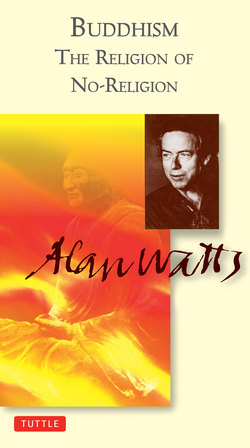Buddhism the Religion of No-Religion

Реклама. ООО «ЛитРес», ИНН: 7719571260.
Оглавление
Alan Watts. Buddhism the Religion of No-Religion
Отрывок из книги
THE RELIGION OF NO-RELIGION
THE EDITED TRANSCRIPTS
.....
What is the great difference between these two schools? The Theravada is very strict. It is a way for monks, essentially, rather than laymen. There are many ways of living Buddhism. The Theravada Buddhists are trying to live without desires: to have no need for wives or girlfriends, husbands or boyfriends; not to kill anything at all; living the strictest vegetarian way; and even straining their water so that they do not eat any little insects with it. Also in this very strict way, they meditate all the time and eventually attain nirvana, which involves total disappearance from the manifested world.
Mahayana feels that that is a dualistic point of view. You do not need to get away from this world to experience nirvana, because nirvana is what there is. It is here; it is now. The ideal person of Mahayana is called a bodhisattva. This originally meant somebody on the way to becoming a buddha, but in Mahayana it means somebody who has become a buddha but has gone back into the world, in the spirit of compassion, in order to help all other beings to become awakened. And that is an endless task, like filling a well with snow. Putting snow into a well, it never fills up. At the Zen monastery, after they have said their homage to the Buddha, the dharma, which is the Buddha’s doctrine or method, and the sangha, the order of followers of the Buddha, then they take four vows, and one of them is “However innumerable sentient beings are, I vow to liberate them all.” So there is no end to that; there never comes a time when all sentient beings are liberated. But from the standpoint of one who is a buddha, everybody is liberated. In other words, a buddha would not say, “Look everybody, I’m a buddha. I’m more experienced than you, and I know more than you, and you owe me respect on that account.” On the other hand, a buddha would see you all as being exactly right; just where you are, all of you are buddhas. Even for those of you who do not know it, it is right for you not to know it at this moment.
.....